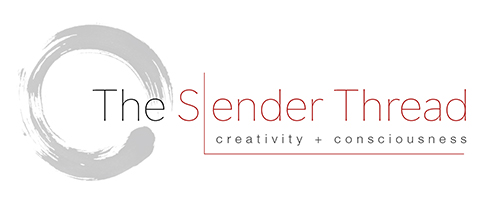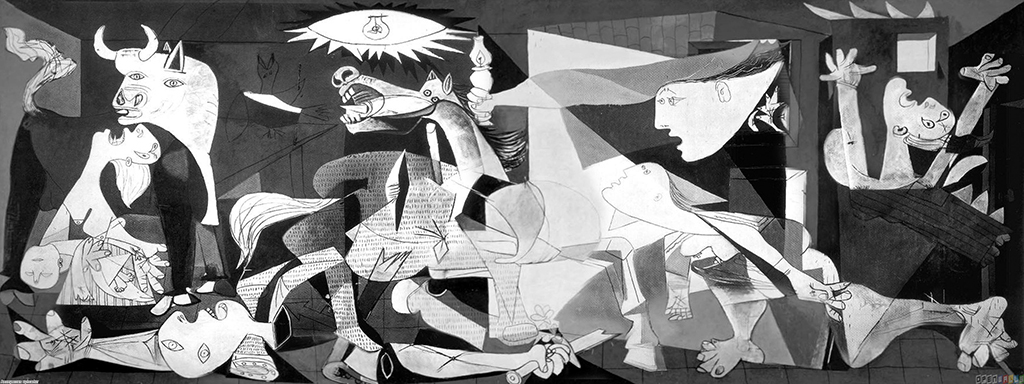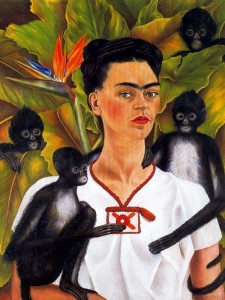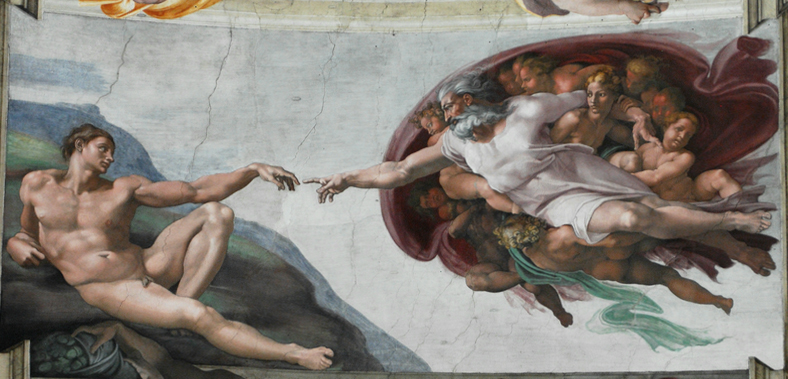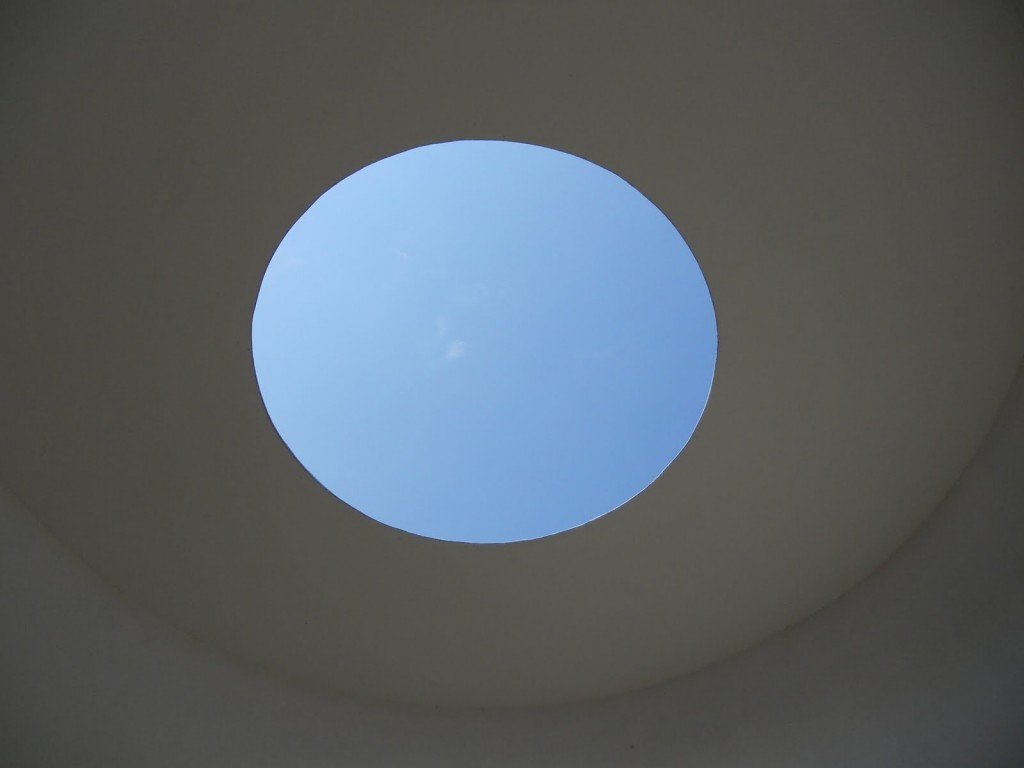It is widely acknowledged that the images which surround and bombard us, and have entered our collective consciousness shape our cultural attitudes in a highly subversive and unconscious manner. They affect us, become part of us, and contribute greatly to the formation of our personal and social selves. In our roles as image-makers and image-receivers, do we wish to perpetuate and further the prevailing negative biases, self-referential attitudes, and the complacency and cynicism found in so many cultural references of our present time?
We must become more responsible, and we must become more conscious. These are essentially interrelated needs. Indeed, we cannot even consider the former without approaching and striving toward the latter. While we can easily see how our world shapes us and, in some way, defines who we are; it is much more difficult to see our own contradictions, and to see that we in fact also shape our world. It is our attitudes, our biases, our greed, and our lack of awareness of ourselves, each other, and our environment, that we see reflected in the world around us. Our culture is a product of ourselves. It is sadly our own creation. If we wish to have a positive impact others through our creative work, and through all of our activities and relationships, there is one fundamental, core need—the bedrock upon which all else rests: to see and know ourselves, to become more conscious and more aware of our deeper possibilities, as well as of our own contradictions, attitudes, hypocrisies, and inconsistencies. We can only understand the world and its people to the degree that we can understand ourselves.
To begin to see in this way is one of the great, humbling experiences of being human. It can be a source of real anguish, and the beginning of what I might call productive suffering, for it brings with it the possibility of real compassion and genuine empathy, toward ourselves and each other, toward our societal conditions, toward our upbringing, and toward the state of the planet itself.
Only under the light of this increased awareness, can we move toward responsibility and caring in our creative efforts. Through the crucible of right suffering, by beginning to see ourselves as we really are, and in looking at the world and our surroundings soberly, without hope or pity, we can aspire to become artists who may someday, and in yet unknown ways, make a difference.
*******
I have come to believe that there is a moral imperative to the artistic process—that making and teaching art brings with it some measure of responsibility. The artist has a place, an evolving role to play in the life of the community by helping to shape and understand culture. The arts do bring something of real importance to the community. They offer knowledge, insight, beauty, and humor, and provide a means of understanding ourselves with greater clarity. They teach us about peoples of varying backgrounds and help us live together with greater understanding and compassion. They hold a mirror and challenge to the society from which they arose, and offer a means of questioning the world around us. Finally, they hold the potential of providing hope and inspiration in an unsettled world and deeply enriching the lives of people. Anyone who lives as an artist may bestow these gifts. The creative impulse is available to everyone.
Many traditional societies believe an artist’s work is but a vehicle for the transmission of knowledge, insight, and revelation. There are many examples that reveal a purpose, either earthly or divine, for the creation of art and the making of objects which serve a collective need. It is not so different today. We ritualize our lives in creative acts such as the photographic documentation of events, celebrations, and our family histories. Song and music still play an integral role in both our everyday lives and our special moments. Visual design, architecture, and images, both still and moving, are potent forms of personal and cultural communication. And artists still serve to reflect the society back on itself, tending our values, nourishing our aspirations, as well as expressing their insights on the many different levels of physical, psychological, and spiritual realities. Artists offer their gifts to the world in many ways; the following archetypal roles can shed light on finding our place in society and assuming responsibility for what we impart to others.
1) The Visionary: As Kandinsky observed in Concerning the Spiritual in Art, the artist can be likened to the bow of a ship, pushing back new layers of experience and insight as it cuts through the sea, in advance of the culture at large. Artists, intellectuals, and creative individuals of all types often function as the avant-garde of a society, leading the way toward new understandings and revelations. Artists are typically among those attuned to the more subtle energies, who carry a vision for their world, and who bring an intuitive perception to the awareness of their culture. The artist reveals the culture to itself, releases insights necessary for their times, and sees more, with greater clarity and with occasional glimpses of prophetic awareness. A world without art could be likened to a world without mirrors; without the capacity to see our own reflection, both metaphorically and literally—and a world lacking in the subtle foretaste of the future.
2) The Midwife: Artists may function as midwives for what is born through them into the world. The artist has his or her antennae up and is sensitive to the new dimensions of experience and insight that the culture fundamentally needs. They may act as a conduit for forces to pass through, stemming from a source beyond their knowing. The artist’s role as a shamanistic figure, as an intermediary between worlds, holds true in our times as it has throughout the history of human endeavor. Often art produced on this basis has the capacity to truly nourish, teach, and inspire; to touch people to their very core. Some of the most enduring art arises from the culture and its conditions —an artist is the child of his or her times—but the paradox is that it goes beyond the culture into the universal. Many artists, musicians, scientists, and creative individuals speak of their revelatory insights and understandings with great humility, sensing a grace and blessing in the knowledge that their work has contributed something of substance and value to the world.
3) The Wounded Healer: The personal experiences of the artist—the particular nature of their joys or struggles, their unhealed wounds, their search for inner completeness toward a more comprehensive relatedness with life, their spiritual strivings, their deeply felt contact with nature and with others, their agonies and ecstasies—all of these become grist for the mill. It could be said that one of the primary roles of the artist is to universalize their own personal experiences, to place them in a language and form which communicates these intimate, private stories in a way that is meaningful to others.
Countless times in my own life I have been helped immeasurably by reading literature, viewing works of art, and hearing a song or musical composition which serve to expand my experience and affirm my own processes of growth and discovery. When we see our joys, our challenges, our strivings, or our suffering reflected in the work of another, we feel a sense of release and a profound kinship with others, an affirmation of our shared humanity.
4) The Magician: We take delight in the newness of discovery. The unexpected juxtapositions of form and language, the freshness of discovery, the startling quality of new observations, and the uniquely individual solution found or created can be a shock to our senses, an awakening. Samvega is an Sanskrit word which refers to this aesthetic shock of awakening we may encounter in a work of art where a heightened sense of being is invoked and nourished. Alexis Brodovitch, art director of Harpers Bazaar, who became a functional guide and teacher to such notable photographers as Richard Avedon, Diane Arbus, and Irving Penn, had one primary dictum in sending his proteges off into the field or on assignment: Astonish me!
All fresh discoveries engender astonishment, surprise, and an element of aesthetic shock. We are arrested into the present when an elegant, graceful solution surfaces. Most personal or social domains—business meetings, family councils, classroom dialogue, descision-making, as well as the creative arts—can provide the impetus to open the door widely to heightened awareness and spontaneous revelation. Above all else, I am promoting an attitude, a way of life; that each and every moment, lived fully, offers a chance for stunning innovation and radical insight.
All knowledge must be perpetually renewed and reinterpreted for each age, each epoch. The language of the past, of another culture and era, may contain the seeds of truth, but it becomes increasingly out of touch to contemporary individuals unless it directly relates to the experience of our own lives, spoken in that generation’s tongue, and using art forms relevant to the present day.
5) The Seeker Art is an expression of the consciousness of its maker. As it has been through the ages, the artist continues to occupy the integral role of seeker, mountain-climber, and higher-altitude guide. Artists reach deeply into themselves and seek a connectedness with the entire range of human experience. Many strive toward a relationship with the subtle energies that underlie all phenomena—the sacred dimension of life. And artists seek to express—or actually embody—their understandings and experiences into works of art.
Works of art created through an artist’s search for the meaning of life often contain the embodiment of higher states of consciousness. Even though the artist may only temporarily experience them, their residue and taste is strong and lingering. The hints of profundity and the radiance of being we perceive in certain works have deeply affected humanity: the music of Bach, the poetry of Rumi and Rilke, and the paintings of Van Gogh—and many more examples—are reflections of the artist’s direct experience of unity and a deeply felt connection to the cosmos.
This form of art stirs something deep within the viewer: the longing for consciousness. It awakens subtle intimations from within, a once-known but forgotten sense of being beyond our mundane selves and our preoccupations. It can be deeply nourishing, healing, and uplifting—mirroring our higher natures. Art can reflect the world that our souls fervently ache for— one of inner unity and expanded awareness. In this sense, art reveals what can be, our future and our highest potential, not only what is, in our current condition of fragmentation and disassociation. The universal creative forces that interweave existence and permeate all living things, can find subtle expression on our level and be hinted at through works of art.
Adapted from: The Widening Stream: the Seven Stages of Creativity by David Ulrich
